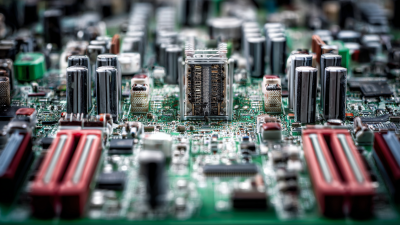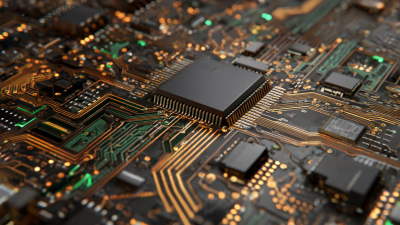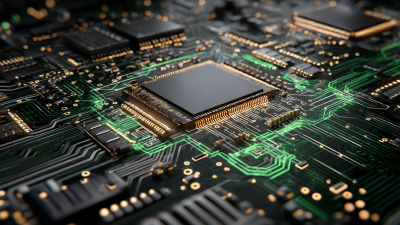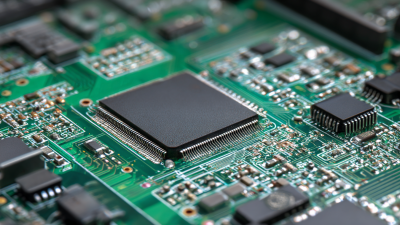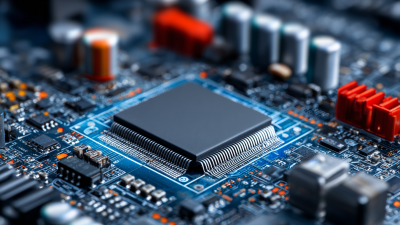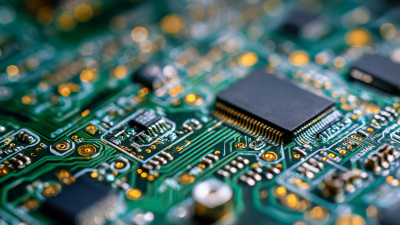In the ever-evolving landscape of electronics manufacturing, understanding the intricacies of pcb fabrication and assembly is crucial for optimizing production efficiency. As businesses strive to meet increasing demand with reduced lead times, they often encounter a range of challenges that can hinder their operations. From design inconsistencies to material selection and process inefficiencies, the problems associated with pcb fabrication and assembly can substantially impact a company's bottom line. This blog delves into seven essential insights that highlight common issues and practical solutions, enabling manufacturers to navigate the complexities of the production process. By addressing these challenges head-on, companies can not only enhance their operational workflows but also pave the way for improved reliability and cost-effectiveness in their electronic products.

Choosing the right PCB materials is critical to maximizing production efficiency and overall performance. The materials selected can significantly influence the manufacturability, durability, and functionality of the final product. When selecting materials, consider factors such as thermal stability, electrical performance, and mechanical strength. For instance, materials with higher thermal conductivity can help dissipate heat more effectively, reducing the risk of damage during operation.
Tip: Always evaluate the specific environmental conditions your PCB will face, including temperature fluctuations and moisture exposure. Selecting materials tailored to these conditions will lead to better longevity and reliability.
Additionally, the choice of laminate can impact the fabrication process. High-quality laminates can facilitate easier machining and drilling, improving the overall production speed. Using advanced materials like high-frequency laminates can also enhance signal integrity in high-speed applications, which is becoming increasingly essential in today’s technology landscape.
Tip: Collaborate closely with your PCB manufacturer to understand which materials they recommend based on your design requirements. Their expertise can help identify the most suitable options, potentially saving you time and money in the long run.
| Insight | Description | Impact on Efficiency |
|---|---|---|
| Material Selection | Choosing the right materials for PCB can enhance thermal management and signal integrity. | Improves product reliability and performance. |
| Design for Manufacturability | Simplifying PCB design to make it easier to manufacture. | Reduces production errors and lowers costs. |
| Layer Count Optimization | Minimizing the number of layers while maintaining functionality. | Decreases fabrication time and cost. |
| Component Placement | Strategic placement of components for better assembly. | Enhances assembly speed and reduces mistakes. |
| Testing Procedures | Implementing rigorous testing protocols during assembly. | Identifies issues early and lowers the risk of failure. |
| Supplier Collaboration | Working closely with suppliers for better materials and processes. | Enhances communication and quality of components. |
| Advanced Technologies | Utilizing advanced manufacturing technologies like automation. | Increases production rates and reduces labor costs. |
In today’s fast-paced electronics market, streamlining PCB design is paramount for enhancing manufacturing processes and maximizing production efficiency. A recent report from IPC indicates that companies employing DfM (Design for Manufacturability) principles have seen a reduction in production costs by up to 30%. By embracing advanced design techniques, manufacturers can minimize errors, reduce rework, and accelerate time-to-market, which is essential for staying competitive.

Tip: Incorporate design rules that align with fabrication capabilities early in the design phase. This proactive approach can eliminate common pitfalls and ensure that the PCB layout adheres to industry standards. A study by TechSearch International highlighted that 70% of manufacturing issues stem from design flaws, underscoring the need for a meticulous design approach.
Furthermore, leveraging collaborative software tools can enhance communication between design and manufacturing teams. According to a survey by PwC, organizations that facilitate real-time data sharing between departments experience a 50% increase in their efficiency metrics. Integrating these tools not only streamlines workflows but also fosters innovation, allowing teams to respond to changes in design requirements swiftly.
Tip: Regularly conduct design reviews involving cross-functional teams to catch potential design flaws early. This collaborative technique not only prevents costly errors but also cultivates a culture of quality within the organization.
Surface Mount Technology (SMT) has revolutionized PCB fabrication and assembly, driving significant cost reductions and enhancing production efficiency. One of the innovative techniques integral to SMT is the use of automated pick-and-place systems. These machines meticulously place surface mount devices (SMDs) onto PCBs with remarkable precision, minimizing manual labor and reducing the likelihood of errors. By streamlining the assembly process, manufacturers can achieve higher throughput rates while maintaining quality, leading to notable cost savings.
Another essential technique in SMT involves the implementation of advanced soldering methods, such as laser soldering and reflow soldering. These methods not only ensure strong electrical connections but also reduce the heat exposure time, thereby preserving the integrity of sensitive components. Additionally, utilizing modern cleaning technologies after soldering helps eliminate contaminants that could affect the performance of the PCBs. By adopting these innovative SMT techniques, manufacturers can optimize their production processes, lower operational costs, and stay competitive in a fast-paced market.
In the rapidly evolving field of electronics manufacturing, automation in PCB assembly stands out as a critical factor for boosting productivity and minimizing errors. Automated systems not only streamline the assembly process but also enhance precision, allowing manufacturers to achieve tighter tolerances in their projects. By integrating advanced technologies such as robotic arms and automated optical inspection (AOI), companies can expedite the production cycle while ensuring high-quality outcomes. This shift not only accelerates throughput but also reduces labor costs, enabling manufacturers to focus on more value-added tasks.
Moreover, implementing automation facilitates real-time monitoring and data collection throughout the PCB assembly process. This data can provide insights into operational efficiency, helping teams identify bottlenecks and areas for improvement. With predictive analytics, manufacturers can foresee potential issues and address them proactively, further minimizing risks of defects and ensuring a smoother production flow. By investing in automation technologies, businesses can achieve a significant competitive edge in an industry where speed and accuracy are paramount.
 Quality control plays a vital role in the PCB fabrication and assembly process, as it directly impacts both the reliability and performance of the final product. To ensure high standards, manufacturers should implement rigorous inspection protocols at every stage, from material selection to final assembly. Early identification of defects can save time and resources, enhancing the overall production efficiency. Techniques such as Automated Optical Inspection (AOI) and Flying Probe Testing can help quickly detect issues, allowing manufacturers to address problems proactively rather than reactively.
Quality control plays a vital role in the PCB fabrication and assembly process, as it directly impacts both the reliability and performance of the final product. To ensure high standards, manufacturers should implement rigorous inspection protocols at every stage, from material selection to final assembly. Early identification of defects can save time and resources, enhancing the overall production efficiency. Techniques such as Automated Optical Inspection (AOI) and Flying Probe Testing can help quickly detect issues, allowing manufacturers to address problems proactively rather than reactively.
Another essential quality control strategy involves establishing a robust testing regime post-assembly. This includes functional testing, which checks whether the PCB operates as intended, and environmental testing, which assesses performance under extreme conditions. By simulating real-life scenarios, manufacturers can ensure that their products will withstand the rigors of actual usage, thereby increasing customer satisfaction and trust in the product's reliability. Engaging in a feedback loop with end-users can also provide insights into potential areas for improvement, leading to continuous enhancement of quality control measures and production processes.
